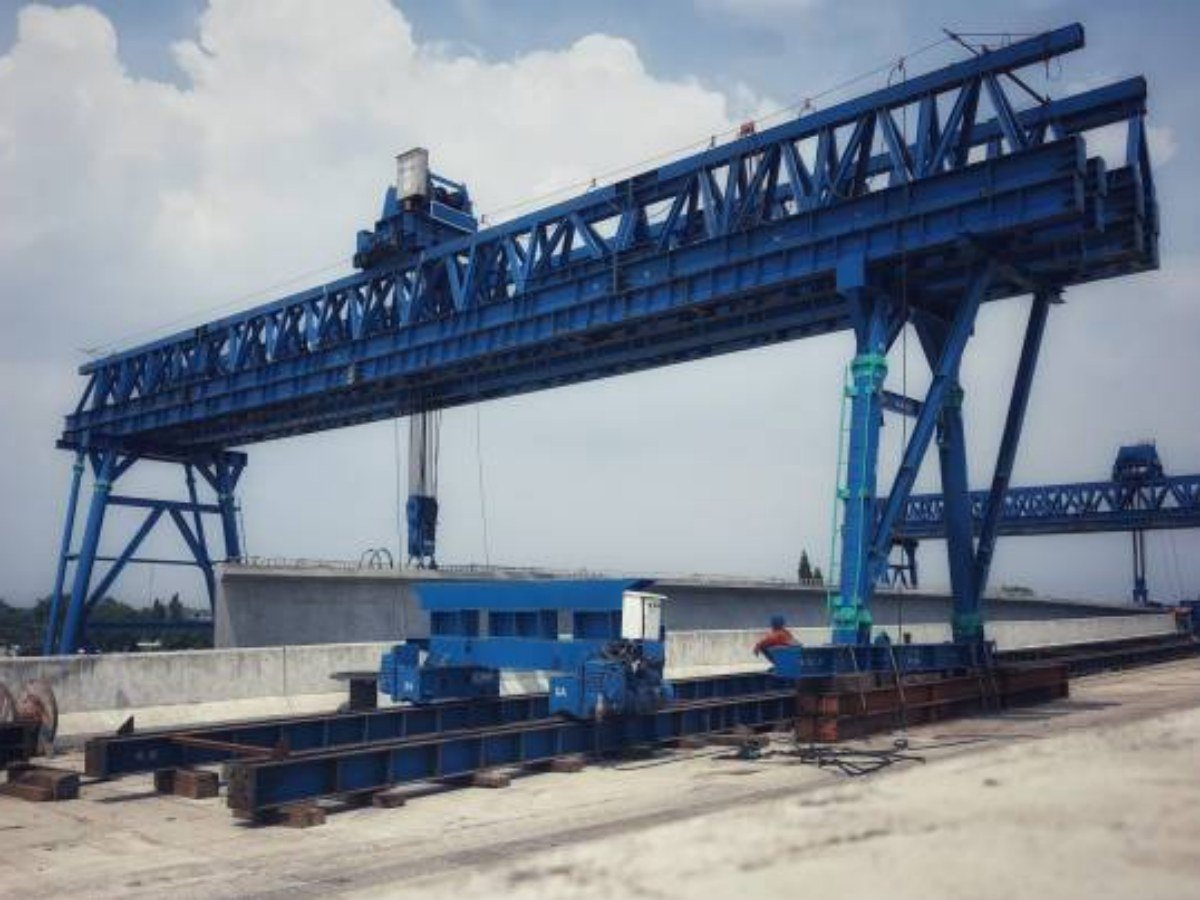gantry girder crane: A Comprehensive Guide to Its Structure and Functionality
Gantry girder cranes are powerful and versatile machines used in various industries for lifting and moving heavy loads. They are an essential part of construction sites, warehouses, shipyards, and manufacturing facilities. In this article, we will explore the different aspects of gantry girder cranes, including their structure, functionality, and applications.
1. Understanding the Structure of Gantry Girder Crane
The gantry girder crane consists of several key components that work together to ensure smooth and efficient operation. The main structural elements of a gantry girder crane include the bridge, end carriages, hoist, trolley, and electrical system.
2. The Bridge: Backbone of the Gantry Girder Crane
The bridge is the primary load-bearing structure of the gantry girder crane. It consists of two horizontal beams, known as girders, that span the width of the working area. The girders are supported by vertical legs, also called columns or towers, at each end. The bridge provides stability and strength to the crane.
3. End Carriages: Enabling Horizontal Movement
The end carriages are mounted on the bridge girders and house the wheels that allow the crane to move horizontally along the gantry rails. The end carriages are equipped with motors and gear systems that drive the wheels, enabling precise and controlled movement.
4. Hoist: Lifting Heavy Loads with Ease
The hoist is the component responsible for lifting and lowering the loads. It consists of a drum or a chain, around which the lifting cable or chain is wound. The hoist is powered by an electric motor and can be operated remotely or from a control cabin.
5. Trolley: Horizontal Movement of the Load
The trolley is mounted on the bridge and carries the hoist. It allows the hoist to move horizontally along the length of the bridge, providing additional flexibility and reach. The trolley is equipped with wheels that run along the bridge rails, enabling smooth movement.
6. Electrical System: Powering the Crane
The electrical system of a gantry girder crane includes the power supply, control panels, and wiring that enable the crane to function. The electrical system ensures the smooth operation of various components, such as the hoist, trolley, and end carriages.
7. Applications of Gantry Girder Crane
Gantry girder cranes find applications in a wide range of industries. They are commonly used in construction sites for lifting and moving heavy materials, such as steel beams and concrete blocks. They are also utilized in warehouses and logistics centers for loading and unloading containers and pallets.
8. Advantages of Gantry Girder Crane
Gantry girder cranes offer several advantages over other types of cranes. They provide high lifting capacity, making them suitable for handling heavy loads. Their versatility allows them to be used in various environments and applications. Gantry girder cranes also offer precise and controlled movement, ensuring safety and efficiency.
9. Maintenance and Safety Considerations
Regular maintenance is essential to ensure the safe and reliable operation of gantry girder cranes. It is important to inspect the structural components, electrical system, and mechanical parts regularly. Additionally, proper training and adherence to safety protocols are crucial to prevent accidents and ensure the well-being of operators and workers.
10. Conclusion
Gantry girder cranes are indispensable machines in industries that require heavy lifting and precise movement. Understanding their structure, functionality, and applications can help businesses make informed decisions when selecting the right crane for their needs. With proper maintenance and safety measures, gantry girder cranes can greatly enhance productivity and efficiency in various industrial operations.

